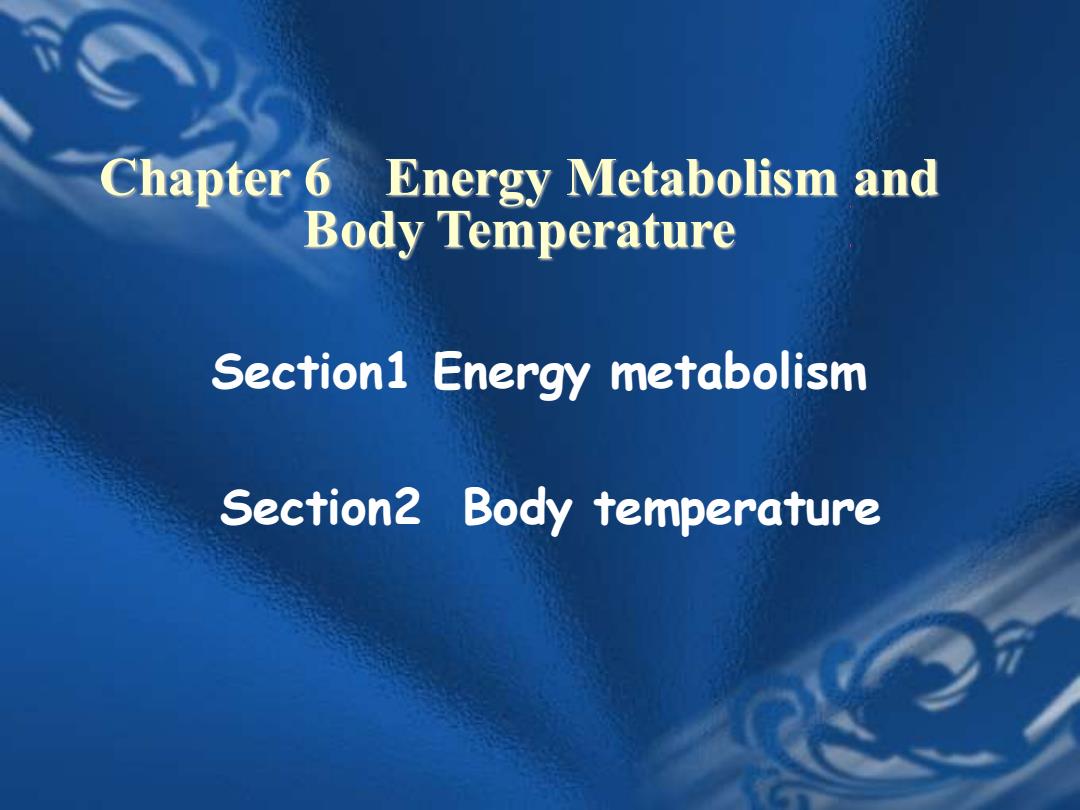
Chapter 6 Energy Metabolism and Body Temperature Section1 Energy metabolism Section2 Body temperature
Chapter 6 Energy Metabolism and Body Temperature Section1 Energy metabolism Section2 Body temperature
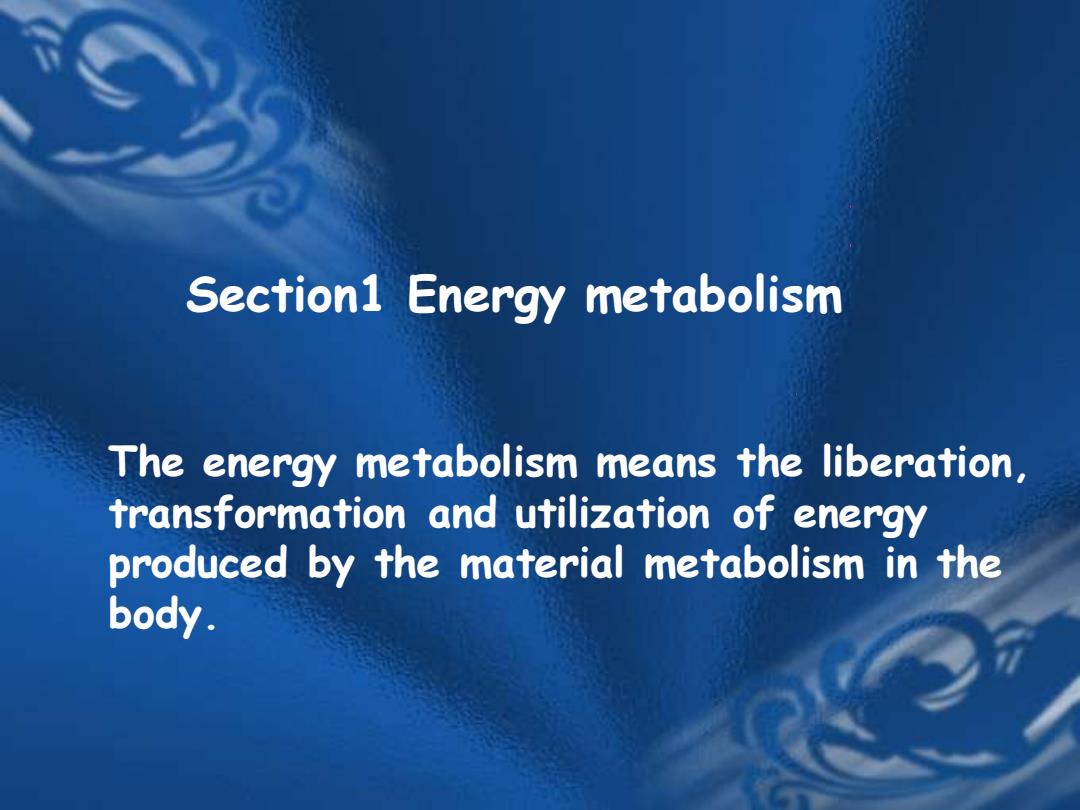
Section1 Energy metabolism The energy metabolism means the liberation, transformation and utilization of energy produced by the material metabolism in the body
Section1 Energy metabolism The energy metabolism means the liberation, transformation and utilization of energy produced by the material metabolism in the body
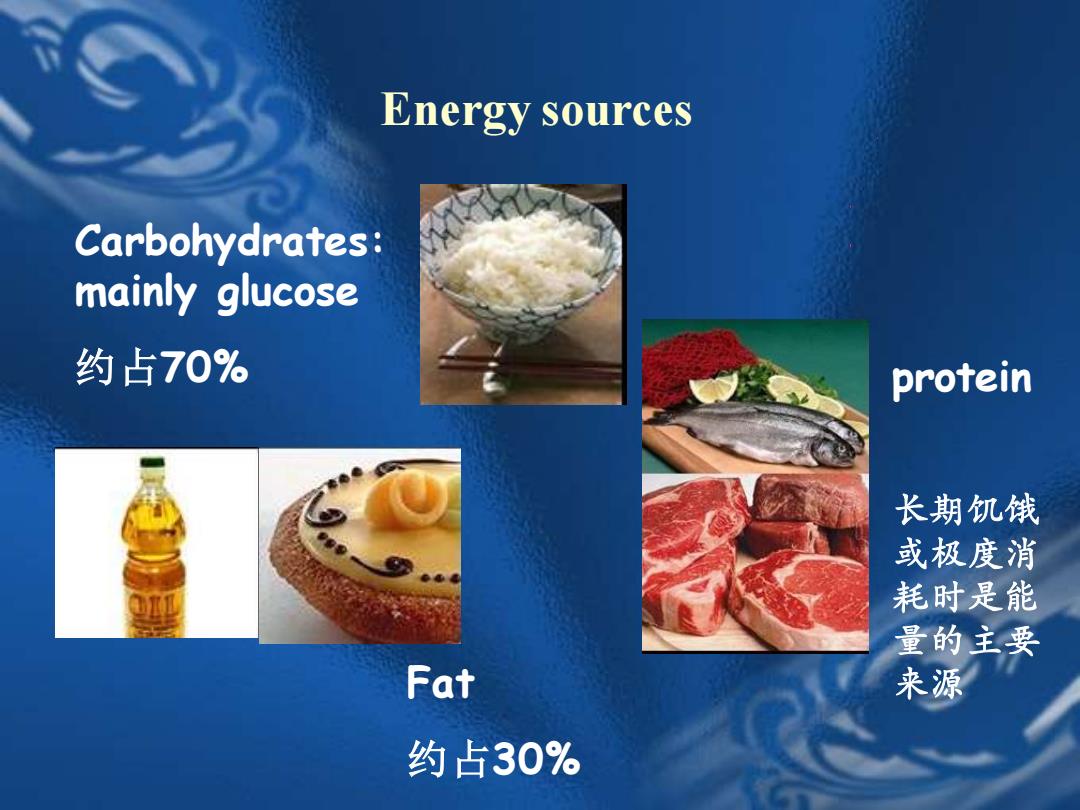
Energy sources Carbohydrates: mainly glucose 约占70% protein 长期饥饿 或极度消 耗时是能 量的主要 Fat 来源 约占30%
Energy sources Carbohydrates: mainly glucose 约占70% Fat 约占30% 长期饥饿 或极度消 耗时是能 量的主要 来源 protein
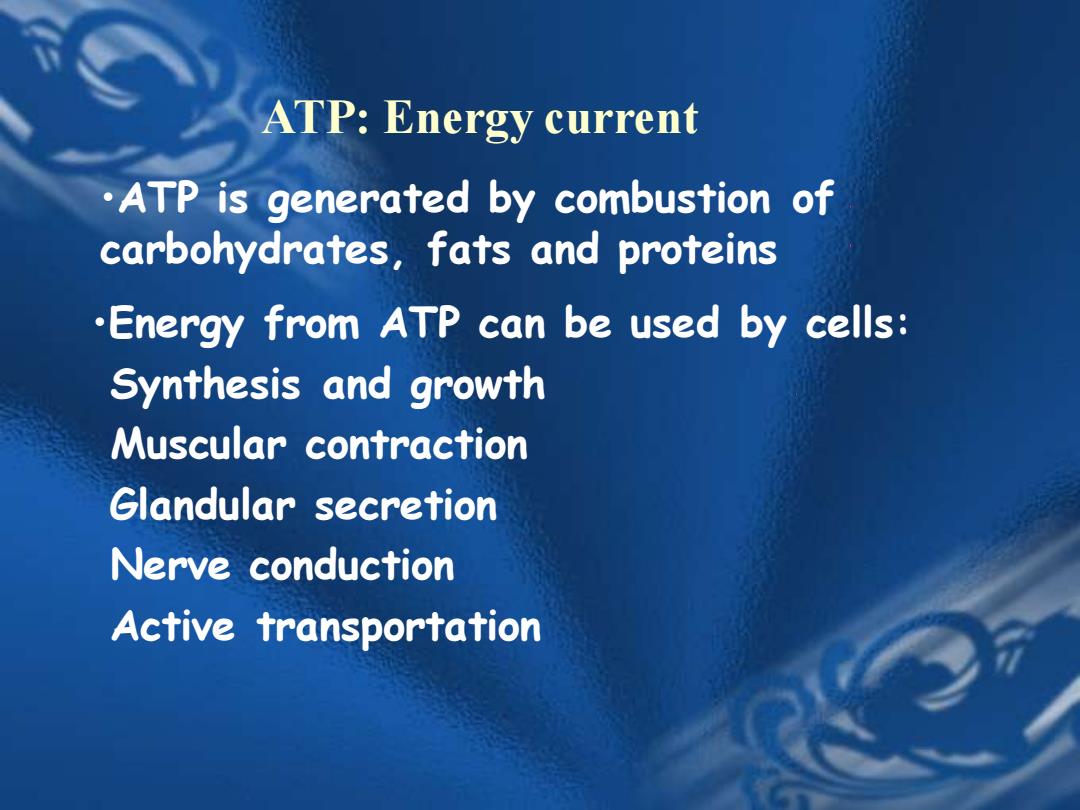
ATP:Energy current .ATP is generated by combustion of carbohydrates,fats and proteins Energy from ATP can be used by cells: Synthesis and growth Muscular contraction Glandular secretion Nerve conduction Active transportation
ATP: Energy current •ATP is generated by combustion of carbohydrates, fats and proteins •Energy from ATP can be used by cells: Synthesis and growth Muscular contraction Glandular secretion Nerve conduction Active transportation
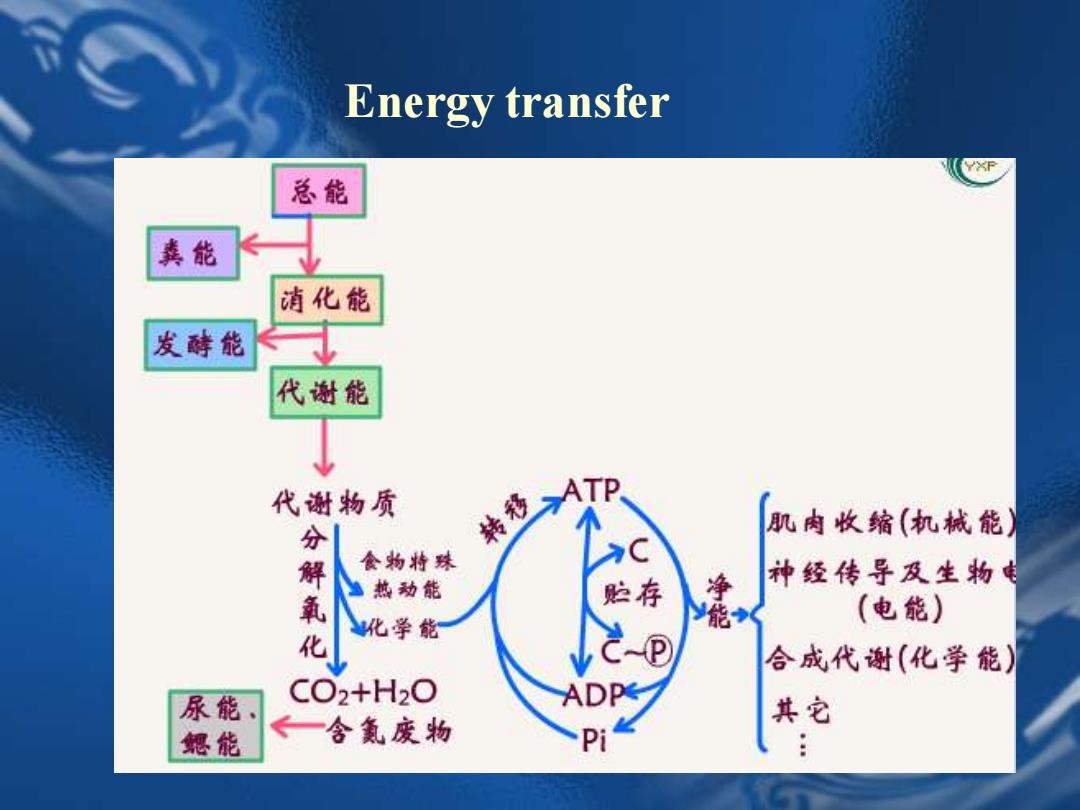
Energy transfer YXP 总能 粪能 消化能 发酵能 代谢能 代谢物质 肌肉收缩(机械能) 食物特殊 解氣化 热动能 贮存 神经传导及生物电 化学能 能 (电能) 合成代谢(化学能) 尿能 CO2+H2O D 鳃能 ←一含氯废物 其它 pi
Energy transfer
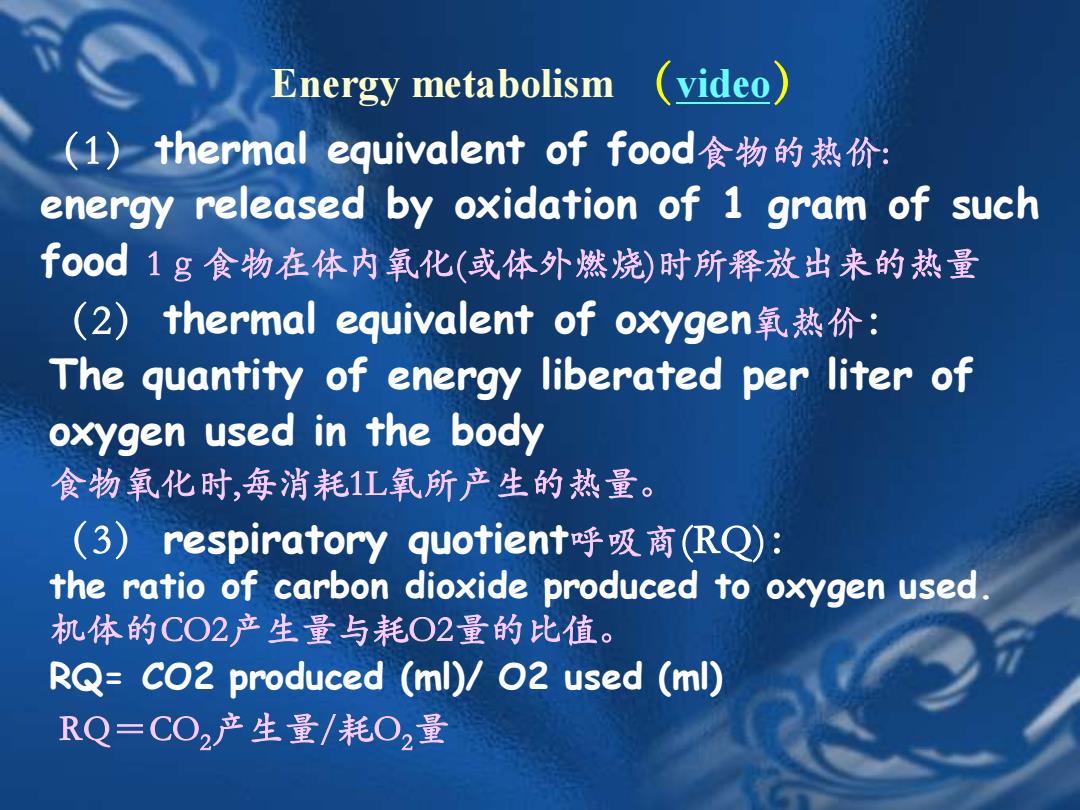
Energy metabolism video) (1)thermal equivalent of food食物的热价: energy released by oxidation of 1 gram of such food1g食物在体内氧化(或体外燃烧)时所释放出来的热量 (2)thermal equivalent of oxygen氧热价: The quantity of energy liberated per liter of oxygen used in the body 食物氧化时,每消耗1L氧所产生的热量。 (3)respiratory quotient呼吸商(RQ): the ratio of carbon dioxide produced to oxygen used 机体的CO2产生量与耗O2量的比值。 RQ=CO2 produced (ml)/02 used (ml) RQ=CO2产生量/耗02量
Energy metabolism (video) (1) thermal equivalent of food食物的热价: energy released by oxidation of 1 gram of such food 1g食物在体内氧化(或体外燃烧)时所释放出来的热量 (2) thermal equivalent of oxygen氧热价: The quantity of energy liberated per liter of oxygen used in the body 食物氧化时,每消耗1L氧所产生的热量。 (3) respiratory quotient呼吸商(RQ): the ratio of carbon dioxide produced to oxygen used. 机体的CO2产生量与耗O2量的比值。 RQ= CO2 produced (ml)/ O2 used (ml) RQ=CO2产生量/耗O2量
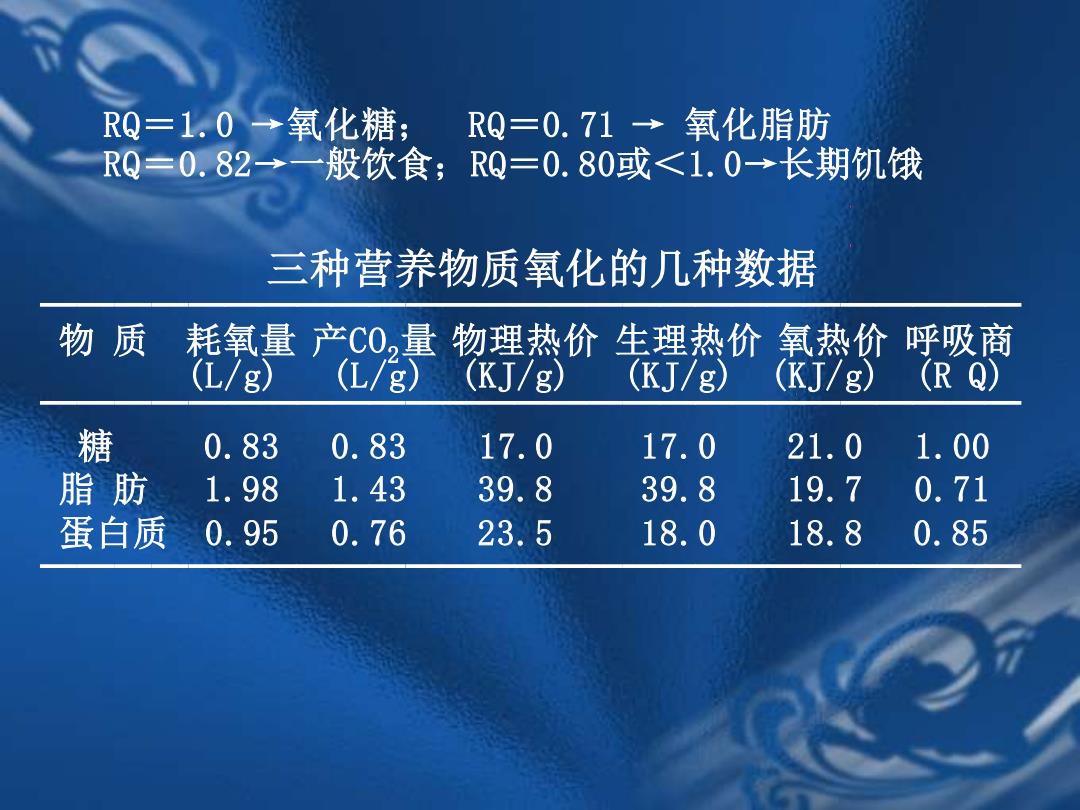
RQ=1.0→ 氧化糖;RQ=0.71→ 氧化脂肪 RQ=0.82-→一般饮食;RQ=0.80或<1.0→长期饥饿 三种营养物质氧化的几种数据 物质 耗氧量 产C0,量物理热价 生理热价 氧热价 呼吸商 (L/g) (L/g8) (KJ/g) (KJ/g) (KJ/g) R Q) 糖 0.83 0.83 17.0 17.0 21.0 1.00 脂肪 1.98 1.43 39.8 39.8 19.7 0.71 蛋白质 0.95 0.76 23.5 18.0 18.8 0.85
RQ=1.0 →氧化糖; RQ=0.71 → 氧化脂肪 RQ=0.82→一般饮食;RQ=0.80或<1.0→长期饥饿 三种营养物质氧化的几种数据 ─────────────────────────── 物 质 耗氧量 产CO2量 物理热价 生理热价 氧热价 呼吸商 (L/g) (L/g) (KJ/g) (KJ/g) (KJ/g) (R Q) ─────────────────────────── 糖 0.83 0.83 17.0 17.0 21.0 1.00 脂 肪 1.98 1.43 39.8 39.8 19.7 0.71 蛋白质 0.95 0.76 23.5 18.0 18.8 0.85 ───────────────────────────

Measurement of energy metabolism 1.Direct calorimetry(直接测热法) 2.Indirect calorimetry(间接测热法)
Measurement of energy metabolism 1.Direct calorimetry(直接测热法) 2.Indirect calorimetry(间接测热法)
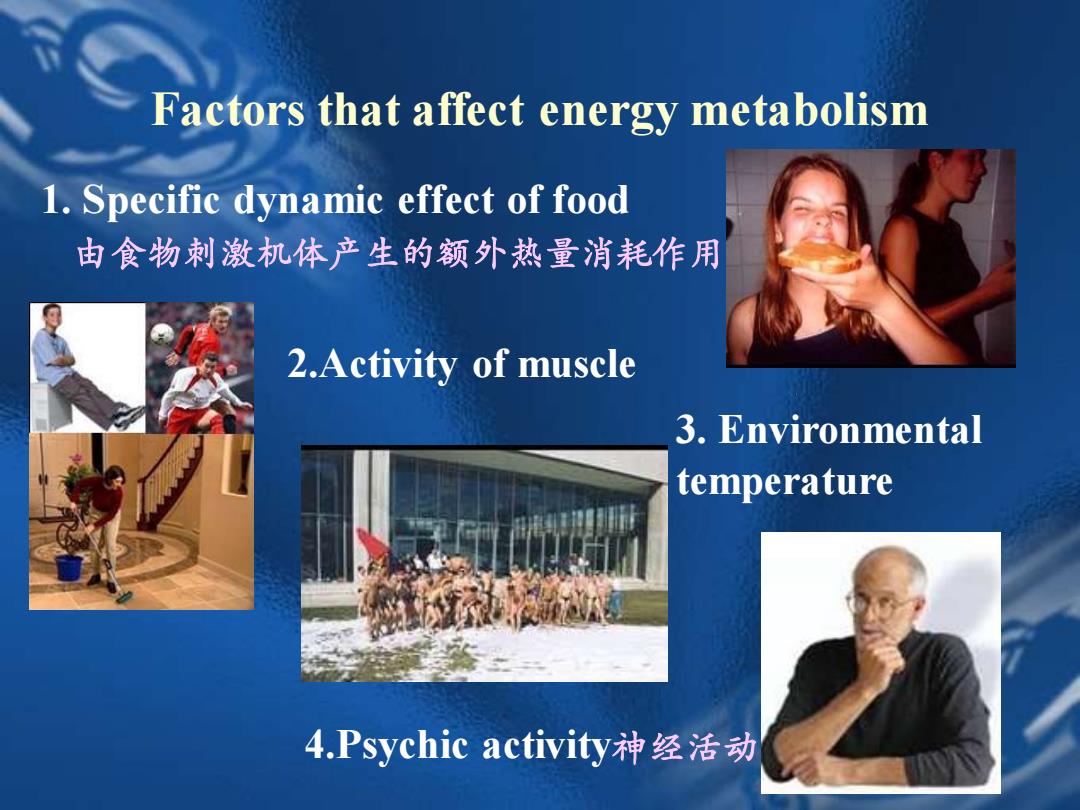
Factors that affect energy metabolism 1.Specific dynamic effect of food 由食物刺激机体产生的额外热量消耗作用 2.Activity of muscle 3.Environmental temperature 4.Psychic activity神经活动
Factors that affect energy metabolism 4.Psychic activity神经活动 1. Specific dynamic effect of food 由食物刺激机体产生的额外热量消耗作用 2.Activity of muscle 3. Environmental temperature
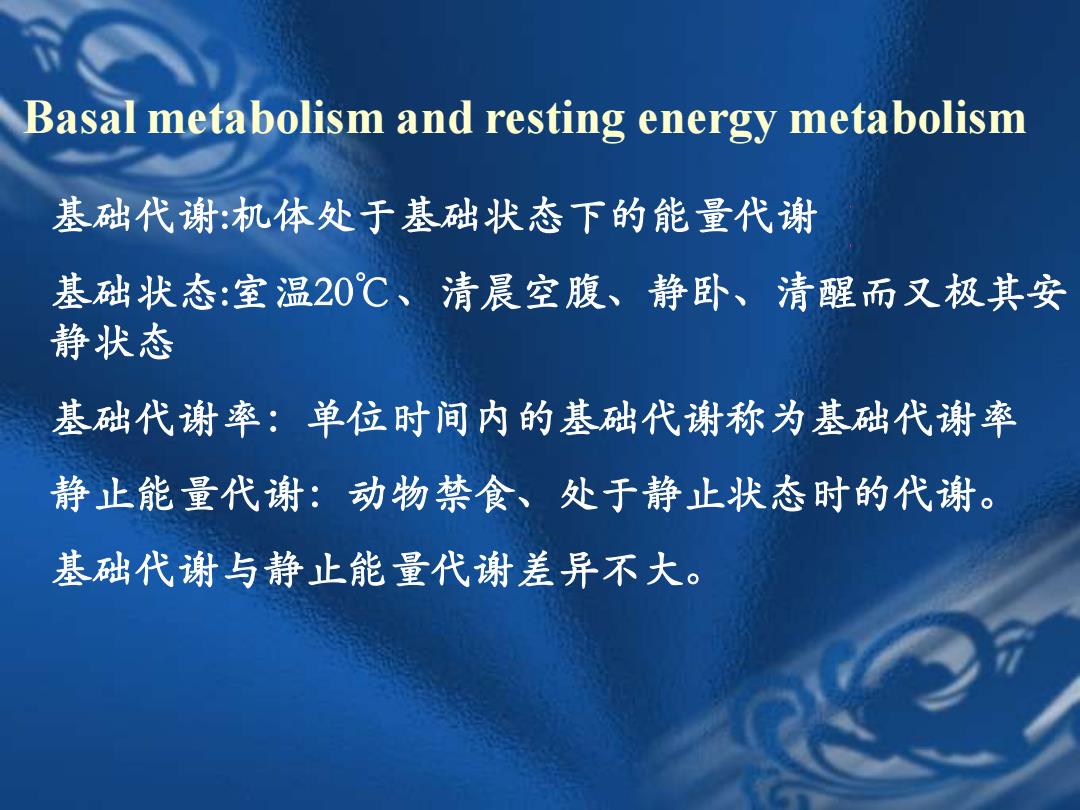
Basal metabolism and resting energy metabolism 基础代谢:机体处于基础状态下的能量代谢 基础状态:室温20℃、清晨空腹、静卧、清醒而又极其安 静状态 基础代谢率:单位时间内的基础代谢称为基础代谢率 静止能量代谢:动物禁食、处于静止状态时的代谢。 基础代谢与静止能量代谢差异不大
Basal metabolism and resting energy metabolism 基础代谢:机体处于基础状态下的能量代谢 基础状态:室温20℃、清晨空腹、静卧、清醒而又极其安 静状态 基础代谢率:单位时间内的基础代谢称为基础代谢率 静止能量代谢:动物禁食、处于静止状态时的代谢。 基础代谢与静止能量代谢差异不大